A Traveler’s Guide to the Jizhou Kiln Site: History, Culture, and Craftsmanship

An Essential Guide to Visiting Jizhou Kiln Site
In This Guide
- An Essential Guide to Visiting Jizhou Kiln Site
- The Rich History and Legends of Jizhou Kiln Site
- Main Highlights: What You Absolutely Can’t Miss
- Planning Your Visit: A Practical Guide
- Tickets: Prices, Booking, and Tips
- How to Get There: A Complete Transportation Guide
- Local Cuisine and Accommodation Nearby
- Frequently Asked Questions
- Final Thoughts on Your Trip
Discovering the Legacy of Jizhou Kiln
Nestled in the picturesque landscapes of Jiangxi Province, the Jizhou Kiln Site (吉州窑遗址) offers an extraordinary glimpse into the rich tapestry of Chinese porcelain history. With a legacy spanning over 1,200 years, this ancient site is a testament to the ingenuity and artistry of Han ethnic craftsmanship. Renowned for its exquisite black glazed porcelain, including the famed Tianmu varieties, Jizhou Kiln has captivated collectors and connoisseurs both domestically and abroad.
As you wander through the remnants of this historic site, you’ll find that it flourished during the late Tang Dynasty, reached its zenith in the Southern Song Dynasty, and gradually declined by the end of the Yuan Dynasty. The intricate porcelain artifacts discovered here not only reflect the technical prowess of their makers but also embody the cultural essence of the Jiangnan region. Each piece tells a story of local traditions, artistic innovation, and the evolving tastes of ancient royalty, making it a must-visit for anyone seeking to understand the historical significance of Chinese ceramics.
In this guide, we will navigate the essential aspects of visiting the Jizhou Kiln Site. From practical travel tips to insights into the kiln’s historical context, prepare to immerse yourself in a journey that intertwines art, culture, and the enduring legacy of one of China’s most celebrated porcelain kilns. Whether you are a history buff, an art enthusiast, or simply a curious traveler, Jizhou Kiln promises an enriching experience that resonates long after your visit.
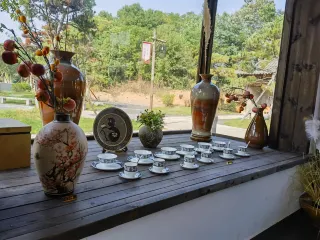
Jizhou Kiln Site.
The Rich History and Legends of Jizhou Kiln Site
Nestled in the scenic Jiangxi Province, the Jizhou Kiln Site is not just a testament to exquisite porcelain craftsmanship; it is steeped in a rich tapestry of history and legends that reflect the cultural heritage of China. The kiln, which has been in operation for over 1,200 years, flourished from the late Tang Dynasty, reached its zenith during the Song Dynasty, and experienced a gradual decline by the end of the Yuan Dynasty. This remarkable timeline is punctuated with stories that enhance the allure of this historical site.
The Birth of a Legacy
The origins of Jizhou Kiln date back to the late Tang Dynasty, a period marked by artistic innovation and cultural exchange. Initially known for producing sauce-brown and milky-white glazed porcelain, the kiln evolved significantly during the Northern Song Dynasty, when the craftsmanship began to flourish. The meticulous techniques developed at Jizhou Kiln integrated influences from the Central Plains while embodying the local charm of Jizhou, ultimately creating a unique style that captured the hearts of both local and international audiences.
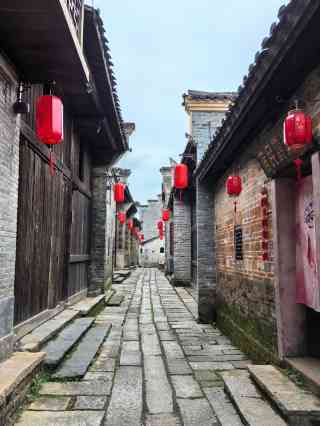
Jizhou Kiln Site.
The Golden Era of Porcelain
During the Southern Song Dynasty, Jizhou Kiln reached its peak, celebrated for its stunning black-glazed porcelain, particularly the renowned “Tianmu” series. Legends tell of how the beauty of these ceramics enchanted royal courts across ancient Europe and the Middle East, establishing Jizhou as a coveted name among porcelain aficionados. The kiln’s artistry was not merely functional but also deeply expressive, often featuring intricate designs such as wood leaves, tortoise shells, and various floral motifs that reflected the vibrant culture of the time.
The Influence of Skilled Craftsmen
The artisans of Jizhou Kiln were revered for their innovative techniques and artistic vision. Legends abound about master potters who dedicated their lives to perfecting their craft. One such tale speaks of a craftsman who, upon noticing the natural patterns formed by the ash during firing, developed a technique that transformed the surface of his creations into stunning works of art. This serendipitous discovery led to the creation of the now-famous “tortoise shell” glaze, which became a hallmark of Jizhou porcelain.
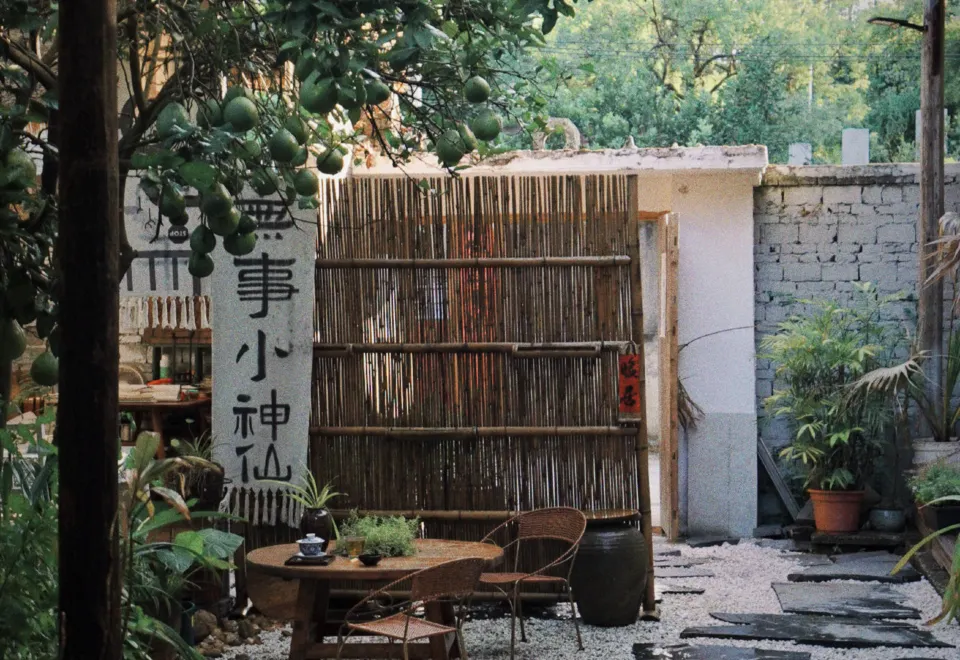
Jizhou Kiln Site.
Myths and Symbolism
Beyond the tangible artifacts, Jizhou Kiln is shrouded in myths that speak to the spirit of the land. One popular legend describes a mystical dragon that once roamed the nearby mountains, blessing the region with fertile soil and an abundance of kaolin—a vital ingredient for porcelain production. It is said that the dragon’s spirit continues to inspire the artisans, guiding their hands in the creation of exquisite pieces that carry a touch of the divine.
The Decline and Revival
The decline of Jizhou Kiln in the late Yuan Dynasty did not erase its legacy. Instead, it became a symbol of resilience. During periods of turmoil, local artisans and their families safeguarded the kiln’s traditions, passing down knowledge through generations. In recent years, efforts have been made to revive the Jizhou Kiln’s artistry, rekindling interest in traditional techniques and fostering a new generation of craftsmen who honor the storied past while innovating for the future.
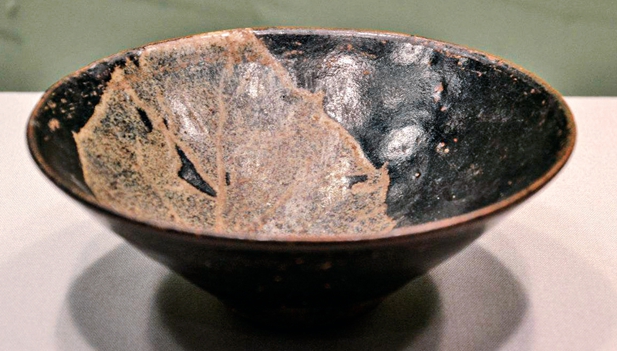
Jizhou Kiln Site.
Conclusion: A Journey Through Time
Visiting the Jizhou Kiln Site is akin to stepping into a living museum where history, artistry, and legend intertwine. As you explore the remnants of this ancient kiln, you are invited to reflect on the stories embedded in the porcelain pieces—each a silent witness to the passage of time and the enduring spirit of creativity. Whether you are an art enthusiast, a history buff, or simply a curious traveler, the Jizhou Kiln offers a profound glimpse into China’s rich cultural tapestry, where every shard is a fragment of a larger narrative waiting to be discovered.
Main Highlights: What You Absolutely Can’t Miss
When exploring the Jizhou Kiln Site (吉州窑遗址), you step into a world where artistry and history converge, offering an unparalleled glimpse into ancient Chinese porcelain craftsmanship. This site, located in Ji’an, Jiangxi Province, is a treasure trove for enthusiasts of history, culture, and the fine arts. Here are the main highlights you absolutely cannot miss during your visit:
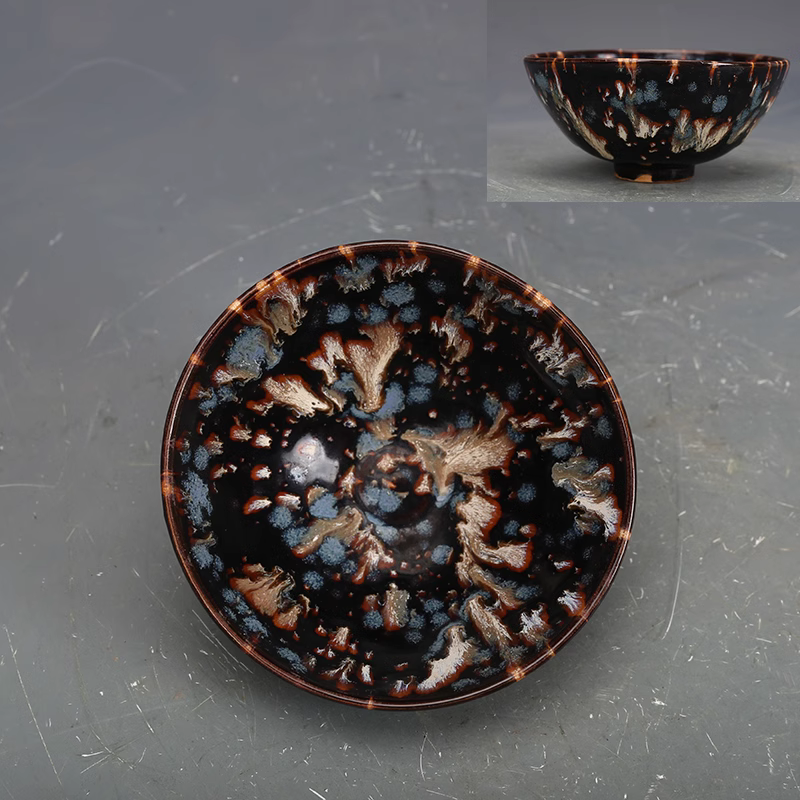
Jizhou Kiln Site.
The Historical Significance
- Ancient Craftsmanship: The Jizhou Kiln dates back over 1,200 years, flourishing from the late Tang Dynasty through the Southern Song Dynasty. This long history has shaped its unique style, blending techniques from the Central Plains with local artistry.
- Cultural Heritage: Recognized as one of the most important porcelain kilns in China, Jizhou Kiln represents the rich heritage of Han ethnic craftsmanship, and its influence on both domestic and international pottery traditions cannot be overstated.
Iconic Porcelain Varieties
- Tianmu Glazed Porcelain: Don’t miss the chance to admire the exquisite black glazed porcelain known as Tianmu. Look for varieties like “wood leaf Tianmu,” “tortoise shell Tianmu,” and the visually striking “sprinkled glaze” — each telling a story of the innovative techniques employed by ancient artisans.
- Milky White Glazed Porcelain: Renowned for its clarity and texture, milky white porcelain is another highlight. The intricate designs and delicate forms of bowls and vessels from the Southern Song Dynasty showcase exceptional craftsmanship.

Jizhou Kiln Site.
Unique Decorative Techniques
- Varied Patterns: The Jizhou Kiln is famous for its employ of various decorative techniques, including wood leaf, tortoise shell, and paper cuttings. Be sure to observe these intricate designs, which reflect the region’s cultural charm and artistic flair.
- Engaging Artistry: Each piece is a testament to the harmony between practicality and artistry, making them not just functional items but also collectible works of art.
Archaeological Insights
- Excavation Discoveries: As you wander the site, take note of the ongoing archaeological work. Excavations have uncovered a rich variety of artifacts that provide insights into the kiln’s production methods and the daily lives of its craftsmen.
- Interactive Displays: Engage with AR experiences and informative displays that bring the history of the Jizhou Kiln to life, making the visit both educational and immersive.
Scenic Surroundings
- Picturesque Landscapes: The Jizhou Kiln Site is set against a backdrop of beautiful scenery. The lush green hills and serene waterways of Jiangxi Province add a tranquil atmosphere to your explorations.
- Photogenic Spots: Capture the essence of this historic site with countless photogenic spots, from the ancient kilns to the vibrant displays of porcelain, perfect for sharing your journey with friends and family.

Jizhou Kiln Site.
Local Culture and Customs
- Folk Traditions: Engage with local customs and folk traditions that continue to thrive in the region. You’ll find that the artistic spirit of Jizhou Kiln extends beyond pottery, enriching the cultural fabric of the area.
- Culinary Delights: Don’t forget to indulge in local cuisine. Try dishes that reflect Jiangxi’s culinary heritage, offering a delicious way to round out your cultural immersion.
Practical Information
- Visitor Facilities: The site is well-equipped to accommodate visitors with informative guides, gift shops selling authentic porcelain, and cafes where you can relax and reflect on your experience.
- Accessibility: Easily reachable via high-speed rail and local transport, Jizhou Kiln is a must-visit destination for anyone interested in the rich tapestry of Chinese history and culture.
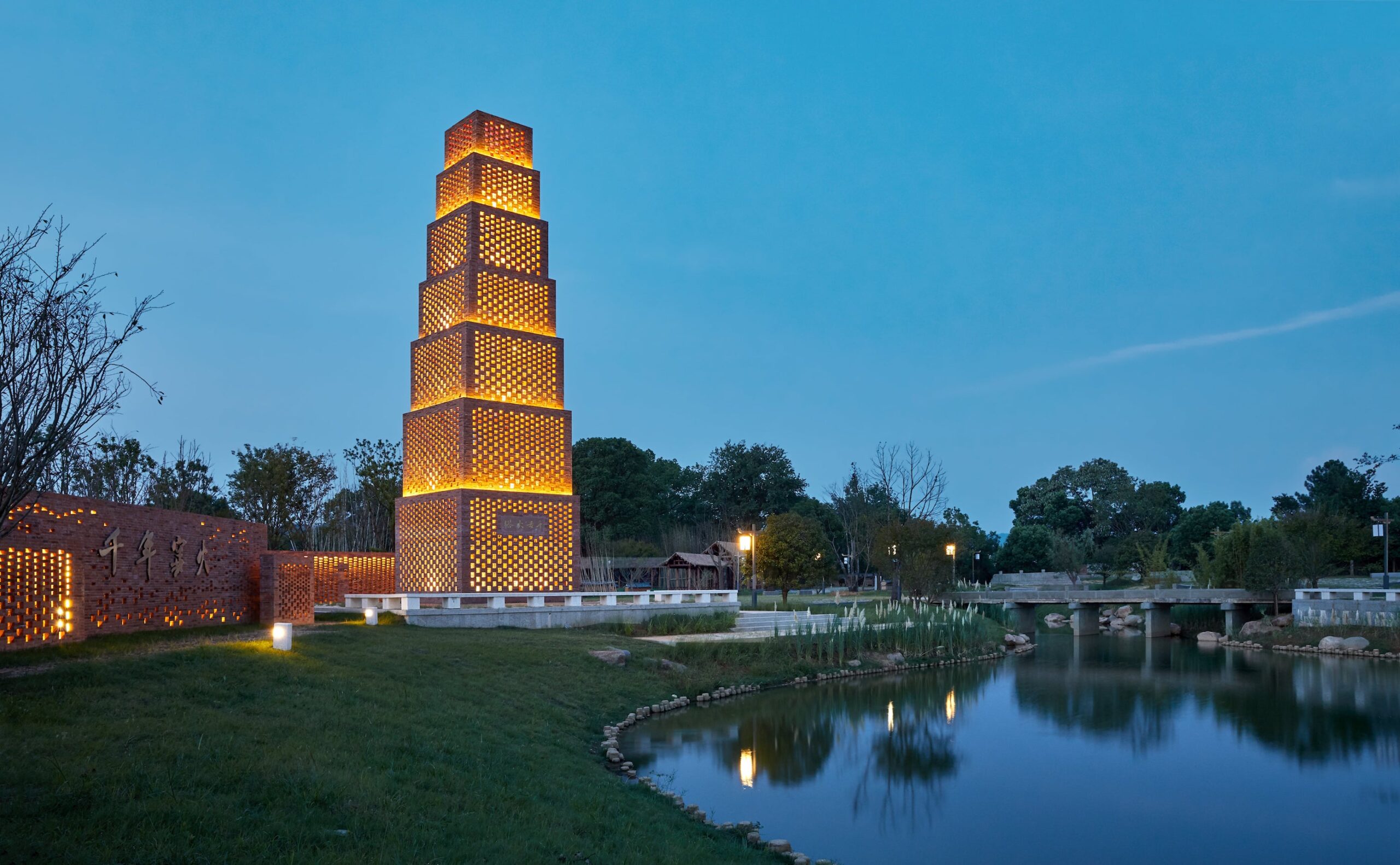
Jizhou Kiln Site.
In summary, the Jizhou Kiln Site offers a remarkable journey through time, showcasing the skill and creativity that have made Chinese porcelain world-renowned. Whether you’re an avid history buff or simply curious about traditional crafts, this site promises an enriching experience that will resonate long after your visit.
Planning Your Visit: A Practical Guide
Discovering the Jizhou Kiln Site: A Travel Guide
Nestled in the picturesque region of Jiangxi, the Jizhou Kiln Site (吉州窑遗址) offers a captivating glimpse into the rich heritage of Chinese porcelain craftsmanship. If you’re eager to explore this historical treasure, this guide will help you plan your visit with practical tips and insightful information.
Getting There
By Air:
The nearest major airport is Jingdezhen Airport (JDZ), located approximately 100 kilometers from the Jizhou Kiln Site. From the airport, you can hire a taxi or take a shuttle to Ji’an, where the kiln site is located.

Jizhou Kiln Site.
By Train:
The high-speed rail network in China makes it convenient to travel to Ji’an. The nearest railway station is Ji’an Railway Station, which connects to major cities like Nanchang and Hangzhou. Once in Ji’an, local taxis or buses can take you to the Jizhou Kiln Site.
By Bus:
Long-distance buses are available from various cities in Jiangxi, including Nanchang and Jingdezhen. Check local bus schedules for the most convenient routes to Ji’an.

Jizhou Kiln Site.
Best Time to Visit
The ideal time to visit Jizhou Kiln Site is during spring (March to May) and autumn (September to November). During these months, you can enjoy pleasant weather and avoid the summer heat or winter chill. Additionally, the surrounding landscapes are particularly beautiful during these seasons, enhancing your experience.
What to Expect
Exploring the Site:
Jizhou Kiln is renowned for its exquisite black glazed porcelain, particularly the unique Tianmu glaze, which resembles the beauty of a tortoise shell. As you wander through the site, you’ll have the opportunity to see various artifacts, including traditional pottery and porcelain, which illustrate the evolution of Jizhou craftsmanship over centuries.

Jizhou Kiln Site.
Cultural Activities:
Engage with the local culture by participating in workshops where you can learn about porcelain-making techniques. Some venues offer hands-on experiences, allowing you to create your own ceramic pieces under the guidance of skilled artisans.
Guided Tours:
Consider joining a guided tour, which can provide you with a deeper understanding of the history and significance of Jizhou Kiln. Knowledgeable guides often share fascinating stories about the kiln’s influence on both Chinese and European porcelain traditions.
Surrounding Attractions
While visiting Jizhou Kiln, take the opportunity to explore other nearby attractions:
- Ji’an Ancient City: A short distance away, this city is rich in historical architecture and cultural sites, providing a glimpse into the region’s past.
- Lushan Mountain: A UNESCO World Heritage site located about 150 kilometers from Ji’an, Lushan is famous for its stunning landscapes and scenic hiking trails.
Accommodation
There are several accommodation options in Ji’an, ranging from budget hostels to upscale hotels. Here are a few recommended places:
- Xiyuan Hotel: A comfortable hotel offering modern amenities and a convenient location near the city center.
- Jiangxi Ji’an International Hotel: An upscale option that provides a blend of luxury and local hospitality, perfect for those seeking a more refined stay.
Practical Tips
- Language: While some locals may speak basic English, having a translation app or a phrasebook can be helpful for communication.
- Currency: The local currency is the Chinese Yuan (CNY). Ensure you have some cash on hand, as not all places accept credit cards.
- Connectivity: Mobile data is widely available, but it’s advisable to download maps and guides before your trip to navigate the area easily.
Conclusion
A visit to the Jizhou Kiln Site is more than just a journey into the world of porcelain; it’s an exploration of Chinese history and culture. With its rich heritage and stunning craftsmanship, this site promises an unforgettable experience for any traveler passionate about art and history. Prepare to be inspired by the beauty and intricacy of Jizhou porcelain as you step into the heart of Jiangxi’s artisanal legacy.
Tickets: Prices, Booking, and Tips
Ticket Information for Jizhou Kiln Site
Visiting the Jizhou Kiln Site (吉州窑遗址) is a fascinating journey into the rich history of Chinese porcelain craftsmanship. To ensure a smooth experience, here’s everything you need to know about ticket prices, booking options, and useful tips for your trip.
Ticket Prices
- General Admission: ¥50 (approximately $7 USD)
- Students and Seniors: ¥30 (approximately $4 USD) – valid ID required
- Children under 12: Free admission
Note: Prices may vary during peak tourist seasons or special events, so it’s advisable to check ahead.
Booking Options
- Online Reservations:
-
Tickets can be purchased in advance through the official tourism website or popular travel platforms like Trip.com and Ctrip. This is recommended during peak seasons to secure your entry and avoid long queues.
-
On-Site Purchase:
-
Tickets can also be bought directly at the entrance of the Jizhou Kiln Site. However, during busy periods, it’s best to arrive early to ensure availability.
-
Guided Tours:
- Consider joining a guided tour for a more in-depth understanding of the site’s historical significance and the intricate details of the porcelain production process. Tour packages often include tickets, transportation, and a knowledgeable guide.
Tips for Visitors
- Best Time to Visit:
-
The ideal time to explore the Jizhou Kiln Site is during the spring (March to May) or autumn (September to November) when the weather is pleasant and the surrounding scenery is at its best.
-
Travel Arrangements:
-
If you’re arriving by air, the nearest airport is in Ji’an. High-speed rail services also connect major cities such as Nanchang and Beijing, making it convenient to reach the site.
-
Explore Surrounding Attractions:
-
Don’t miss the nearby porcelain museums and local markets that showcase exquisite Jizhou ceramics. Plan a full day to immerse yourself in the local culture.
-
Respect Cultural Heritage:
- As a significant historical site, ensure you respect the artifacts and surroundings. Photography is typically allowed, but be mindful of any restrictions in specific areas.
By planning ahead and following these guidelines, you can fully appreciate the artistic legacy of the Jizhou Kiln and enjoy a memorable visit to this ancient treasure of Chinese craftsmanship.
How to Get There: A Complete Transportation Guide
Getting to Jizhou Kiln Site: Your Essential Transportation Guide
Exploring the Jizhou Kiln Site (吉州窑遗址) is an enriching experience that immerses you in the rich heritage of Chinese porcelain craftsmanship. Located in Ji’an, Jiangxi Province, this historical site is well-connected, making it accessible for international travelers. Here’s how to navigate your way to this fascinating cultural landmark.
By Air
Nearest Airport:
– Jiangxi Jinggangshan International Airport (JGS)
This is the closest airport to Ji’an, located approximately 50 kilometers (about 31 miles) from the city center. The airport serves domestic flights from major cities like Beijing, Shanghai, and Guangzhou.
Getting to Ji’an from the Airport:
1. Airport Shuttle: There are shuttle buses that connect the airport to Ji’an’s city center. The journey takes about 1 hour.
2. Taxi: Taxis are available outside the arrivals hall. A taxi ride to Ji’an costs around 150 RMB and takes approximately 50 minutes.
3. Ride-hailing Services: Apps like Didi Chuxing can also be used for convenient transport to Ji’an.
By Train
High-Speed Rail:
– Ji’an Railway Station is well connected to several major cities through China’s high-speed rail network. This is the most efficient way to travel, combining comfort with speed.
Popular Routes:
– From Nanchang: Trains depart frequently and the journey takes about 2.5 hours.
– From Hangzhou: Expect around 4 hours of travel time.
– From Guangzhou: The journey takes approximately 6 hours.
Local Transport from Ji’an Railway Station:
– Taxi: The ride from the station to the Jizhou Kiln Site takes around 20 minutes.
– Public Bus: Local buses run from the train station to various parts of Ji’an, including stops near the kiln site.
By Bus
Long-Distance Buses:
– Ji’an is also accessible via long-distance buses from neighboring cities like Nanchang and Wenzhou. Buses arrive at the Ji’an Long-distance Bus Station.
From Ji’an Long-distance Bus Station:
– Taxi: A taxi to the Jizhou Kiln Site will take about 15 minutes.
– Public Bus: Check local schedules for buses that head towards the kiln area.
By Car
Driving:
– If you prefer the flexibility of a rental car, Ji’an is easily accessible via major highways. The G60 and G72 expressways provide convenient routes from cities like Nanchang and Wenzhou.
Parking:
– There are designated parking areas near the Jizhou Kiln Site, making it easy to explore the area at your own pace.
Local Transportation
Once in Ji’an, getting around is simple:
– Taxis: Readily available and relatively inexpensive.
– Bicycles: Consider renting a bike to enjoy the scenic beauty of Ji’an and the surrounding countryside.
Final Tips
- Language: While some signs are in English, having a translation app or a phrasebook can enhance your experience.
- Timing: The best time to visit the Jizhou Kiln Site is during spring and autumn when the weather is mild.
- Cultural Etiquette: Be respectful of local customs, especially in historical sites.
With this comprehensive transportation guide, you are now equipped to embark on your journey to discover the exquisite craftsmanship and historical significance of the Jizhou Kiln Site. Enjoy your travels!
Local Cuisine and Accommodation Nearby
When visiting the Jizhou Kiln Site, immersing yourself in the local cuisine and finding comfortable accommodation can enhance your cultural experience. Located in the picturesque Jiangxi province, this area offers a delightful array of traditional dishes and hospitable lodging options that reflect the region’s rich history.
Local Cuisine
Jiangxi cuisine, known for its bold flavors and distinct techniques, is a must-try for any food enthusiast. Here are some local dishes to savor during your stay:
-
Jiangxi Rice Noodles (赣州米粉): Known for their smooth texture and delightful chewiness, these rice noodles are often stir-fried or served in a savory broth, garnished with fresh vegetables and tender meats.
-
Steamed Fish Head (蒸鱼头): A delicacy of the area, this dish features fresh fish heads steamed with ginger, garlic, and various spices, resulting in a rich and aromatic flavor that is both comforting and hearty.
-
Pork Belly with Preserved Vegetables (梅菜扣肉): This classic dish showcases tender slices of pork belly braised with pickled mustard greens, creating a perfect balance of umami and tanginess.
-
Jiangxi Bamboo Shoots (江西竹笋): Celebrated for their crispness and flavor, bamboo shoots are often stir-fried or used in soups, offering a refreshing taste of the local flora.
-
Black Glazed Porcelain Dessert: While you can’t eat the porcelain itself, you can enjoy desserts served in beautiful Jizhou black glazed bowls, often featuring traditional sweets like red bean cakes or sweet rice dumplings.
For the best dining experience, consider visiting local eateries where you can interact with friendly chefs and gain insight into the culinary traditions that have been passed down through generations.
Accommodation Nearby
After a day of exploring the historical and cultural wonders of the Jizhou Kiln Site, a good night’s rest is essential. Here are some accommodation options that combine comfort with local charm:
-
Jizhou Hotel (吉州酒店): Situated conveniently close to the kiln site, this hotel offers modern amenities with a traditional Jiangxi flair. Guests can enjoy comfortable rooms, a restaurant serving local cuisine, and guided tours to the kiln.
-
Xiangshan Garden Hotel (香山花园酒店): Nestled in a serene environment, this hotel provides a peaceful retreat with beautifully landscaped gardens. The on-site restaurant specializes in Jiangxi dishes, making it an ideal spot to unwind after a day of sightseeing.
-
Jiangxi Cultural Inn (江西文化客栈): This charming inn is designed to reflect the local culture, featuring traditional decor and warm hospitality. It offers cozy rooms and a communal area where guests can share stories and experiences.
-
Dongjiang Farm Stay (东江农家乐): For those seeking an authentic rural experience, consider a farm stay. Guests can participate in local farming activities, enjoy home-cooked meals, and immerse themselves in the natural beauty of Jiangxi.
-
Boutique Guesthouses: Scattered throughout the region, many boutique guesthouses offer personalized service, unique decor, and the chance to stay in historical buildings. These accommodations provide a more intimate experience, often with home-cooked meals prepared by friendly hosts.
Conclusion
Whether indulging in the robust flavors of Jiangxi cuisine or resting your head in one of its charming accommodations, your visit to the Jizhou Kiln Site will be a journey through time, culture, and taste. Be sure to savor every moment and every bite as you explore this fascinating corner of China.
Frequently Asked Questions
Frequently Asked Questions about Jizhou Kiln Site
1. What is the Jizhou Kiln Site known for?
The Jizhou Kiln Site, located in Ji’an, Jiangxi Province, is renowned for its rich history of traditional porcelain craftsmanship. It is particularly famous for its exquisite black glazed porcelain, which includes unique styles such as Tianmu glazed porcelain and decorative techniques like paper cuttings and tortoise shell patterns.
2. When was the Jizhou Kiln first established?
The Jizhou Kiln was founded in the late Tang Dynasty and has a firing history of over 1,200 years. It reached its peak during the Southern Song Dynasty and continued to be significant in the Yuan Dynasty.
3. What types of porcelain can be found at Jizhou Kiln?
Jizhou Kiln produces a diverse range of porcelain, including:
– Black glazed porcelain: Notable for its glossy finish and distinctive styles.
– Milky white glazed porcelain: Characterized by its crystal-clear glaze and rich designs.
– Green glazed porcelain: Featuring various decorative patterns, including floral motifs.
4. How does Jizhou Kiln porcelain differ from other Chinese porcelain?
Jizhou Kiln porcelain integrates porcelain-making techniques from the Central Plains while showcasing local cultural elements. Its unique decorative styles and glazing techniques, such as the iconic “wood leaf” and “paper cuttings,” distinguish it from other regional porcelains.
5. Can visitors explore the Jizhou Kiln Site?
Yes, visitors can explore the Jizhou Kiln Site, which features exhibitions showcasing the history and craftsmanship of Jizhou porcelain. There are also interactive experiences, such as AR displays, that provide insights into the kiln’s significance in Chinese ceramic history.
6. What is the best time to visit the Jizhou Kiln Site?
The ideal time to visit is during the spring (April to June) and autumn (September to November) months when the weather is pleasant and conducive to outdoor exploration.
7. How do I get to the Jizhou Kiln Site?
The Jizhou Kiln Site is accessible via Ji’an City, which is served by various transportation options, including high-speed rail and airports. Local transportation options such as taxis and buses can be used to reach the site from the city center.
8. Are there any accommodations near the Jizhou Kiln Site?
Yes, there are several hotels and guesthouses in and around Ji’an that cater to different budgets. It is advisable to book in advance, especially during peak tourist seasons, to ensure availability.
Whether you are a history enthusiast, a culture aficionado, or simply curious about Chinese porcelain, the Jizhou Kiln Site offers a remarkable journey into the artistry and legacy of ancient Chinese ceramics.
Final Thoughts on Your Trip
As you prepare to conclude your journey through the enchanting world of the Jizhou Kiln Site, allow yourself a moment to reflect on the rich tapestry of history, culture, and artistry that this remarkable destination offers.
A Journey Through Time
Visiting Jizhou Kiln is not merely an exploration of porcelain; it’s a voyage through the ages, tracing the evolution of an art form that has captivated hearts across continents for over 1,200 years. From the delicate craftsmanship of black glazed porcelain to the intricate designs of milky white pieces, every artifact tells a story that links the past to the present.
Cultural Significance
Jizhou Kiln is a testament to the ingenuity of the Han people and their profound connection to the land. The harmonious blend of local tradition and artistic innovation has forged a unique identity for Jizhou porcelain, making it a symbol of Jiangxi’s cultural heritage. As you walk through the kilns and exhibitions, you’ll feel the pulse of history and the spirit of the artisans who dedicated their lives to perfecting this exquisite craft.
A Lasting Impression
Your visit to Jizhou Kiln will leave you not only with memories of stunning ceramics but also with a deeper appreciation for the cultural narratives that shape Chinese history. Whether you are an avid historian, an art enthusiast, or simply a curious traveler, the stories embedded within each piece of porcelain will resonate long after you leave.
Final Thoughts
In conclusion, the Jizhou Kiln Site invites you to immerse yourself in its artistic legacy, to understand the craftsmanship that transcends time, and to appreciate the cultural significance of porcelain in forging connections among people. As you depart, carry with you the beauty of Jizhou and the knowledge that you have experienced a vital chapter of China’s rich cultural narrative—one that continues to inspire and enchant visitors from around the globe.
May your travels be filled with discovery, and may your heart always hold a piece of Jizhou’s timeless elegance.